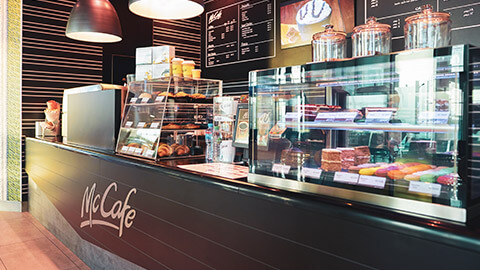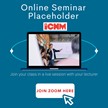Welcome to Topic 6: Putting the Pro in Product. In this topic you will learn about:
- What is a product?
- The levels of products
- Classification of products
- Goods versus services
- The product life cycle
- The development of a new product.
When you are buying a product, what are you actually buying it for? What benefits and solutions are you after? This topic explores and examines the first of the four Ps in marketing. Understanding the product is critical because it is the thing we offer our customers to satisfy their needs. It also forms the basis for other elements within the marketing mix – Price, Place, and Promotion.
These relate to the Subject Learning Outcomes:
- Evaluate market conditions and consumer needs when forming marketing strategies.
- Describe a range of common strategies for use with each of the various marketing mix tools: product, pricing, promotion, and distribution.
- Recommend and justify an appropriate mix of such strategies to form a cohesive overall strategy to address given marketing tasks or situations.
Welcome to your pre-seminar learning tasks for this week. Please ensure you complete these prior to attending your scheduled seminar with your lecturer.
Click on each of the following headings to read more about what is required for each of your pre-seminar learning tasks.
Read Chapter 8 (pp. 232-252) of Kotler, P & Armstrong, G 2021, Principles of Marketing Global Edition, 18th edn., Pearson.
Read the following journal articles:
- Murphy, PE & Enis, BM 1986,‘Classifying products strategically’, Journal of Marketing, 50(3):24-42.
- Day, GS 1981, ‘The product life cycle: analysis and applications issues’, Journal of Marketing, 45(4):60-67.
- Nijssen, EJ 1999, ‘Success factors of line extensions of fast-moving consumer goods’, European Journal of Marketing, 33(5/6):450-460.
Read the following web articles and industry reports:
- Forsey, C 2021, Product classification: what it is & its impact on marketing efforts, Hubspot
- Gutman, E 2020, Optimizing your product mix: The Goldilocks of business strategy, Zapier
- Wright, G 2021, How to use the Product Life Cycle (PLC) marketing model, Smart Insights
- Levitt, T 1965, Exploit the product cycle, Harvard Business Review
- Riserbato, R 2021, The 6 stages of the product life cycle, Hubspot
- Sutton, M 2021, What is product development? Learn the 7-step framework helping businesses get to market faster, Shopify
- Asana 2021, Product development process: The 6 stages (with examples)
Read the case study, ‘Toyota: Developing a Million New Product Ideas Every Year’ on p. 292 of the prescribed text.
Read and watch the topic content.
There are discussion forum activities for this topic, which will enhance your knowledge and give you the opportunity to interact with your peers. You can access the activities by clicking on the following links. You can also navigate to the forum by clicking on 'MKT100 Subject Forum' in the navigation bar for this subject.
- Topic 6: Forum Activity 1 - Product mix
- Topic 6: Forum Activity 2 - Product ideas

What is a product?
Hopefully, you still remember the definition of a product from our first topic a while back? Fret not if you cannot recall, we will do a little recap. A product is basically anything that can be offered to the market or consumers to satisfy a need (Kotler & Armstrong 2021). This ranges from goods (physical product) and services (intangible products) to broader categories such as experiences, people, destinations, and ideas. Can you name some examples? Take a look at the image in the following slider to spark some ideas of various product types. Click the arrows under the image slider to move through the images.
The levels of products
Products can be seen as a bundle of benefits that consumers receive from a purchase. When they are purchasing a product, it is often the benefits or solutions offered that they seek, rather than the product itself or the product features. For instance, a person can turn to many different products if they are wanting to sleep better, such as sleeping pills (goods), exercise classes (services), or meditation (ideas) which all deliver the same benefit (Murphy & Enis 1986). The need for a better sleep is known as the core product, which is ultimately what the customer is really buying (Armstrong et al. 2020).
Now let us use a winter coat to explain the core benefits customers are getting:
- People who purchase winter coats from Kmart may just want to keep warm during the cold weather (utility).
- People who purchase winter coats from Burberry may want to signal their wealth and status (extrinsic motivations) on top of keeping warm.
- People purchase winters coats from Patagonia because they value sustainable and ethical practices (altruism) on top of keeping warm.
The core benefits that customers seek can also differ depending on the target market. The reason young professionals eat at McDonald's is because they are time-poor, but the reason children visit McDonald's may be the playground or the toy they get from a Happy Meal.
Moving out from the core product level is the actual product, which are all the product characteristics or attributes required to deliver the core benefits. These include the features, design, packaging, quality, and brand name (Kotler & Armstrong 2021).
As a basic requirement, a functional winter coat must be made from materials that offer insulation. A designer winter coat should be luxury-branded and come with stylish fastenings. A sustainable winter coat should be made from recycled materials and be produced ethically with the least amount of packaging.
The outmost level is the augmented product, which are value-adding elements that offer additional benefits to the customers. Examples include after-sale service, warranty, product support, and delivery (Kotler & Armstrong 2021).
Kmart offers basic and fuss-free services available in most stores such as home delivery and 'click and collect'. Sales representatives in Burberry flagship stores offer a personalised shopping experience with style advice as it has been outlined on their website, Burberry Services. Patagonia provides their customers with free repairs and alterations so they can buy less as shown on the following website, Better than new.
When designing or developing a product, there are many decisions to make. By looking at the three (3) levels of product, we can identify what customers actually seek from the product and make decisions about the actual and augmented product to create the most customer value. Here are some questions to ask yourself:
- What level of quality should we offer our customers and what are their expectations?
- Are there particular features that are important to our customers?
- What should our product packaging look like?
- What should our brand convey?
- Are there any value-added benefits or services that we can offer our customers?
Classification of products
One of the initial steps in laying out a sales or advertising plan is to determine whether the article to be sold will be purchased by consumers ordinarily with shopping or without shopping, at points of immediate convenience or in central trading districts, with insistence on an individual brand, with merely brand preference, or with indifference to brand.(Copeland 1923, p. 282)
Researchers in marketing have always wanted to divide products into different categories so that appropriate marketing mix strategies can be developed for each category (Winzar 1992). Products are classified based on how consumers go about purchasing the product (Kotler & Armstrong 2021) or the risk and effort associated with the purchase (Murphy & Enis 1986). Products are largely classified into the following four (4) categories:
- Convenience
- Shopping
- Specialty
- Unsought products.
Convenience products
Convenience products are products that are relatively low risk and therefore customers may buy it frequently and immediately with little effort in comparing alternatives (Kotler & Armstrong 2021). Examples include most necessities and grocery items such as shampoo, flour and eggs.
A variation to this category is preference products which are preferred convenience products usually due to a strong branding (Murphy & Enis 1986). For example, a consumer choosing Panadol over other brands believing it is more effective even though all brands contain the same active ingredient, paracetamol.
Shopping products
Shopping products are perceived to be riskier due to the higher price, so consumers are generally more involved in these decisions (Murphy & Enis 1986). When buying shopping products, consumers often compare brands, stores, price, quality and style or as the name implies ‘shop around’ because the purchase is important to them (Kotler & Armstrong 2021). Examples include clothing, automobiles, and electronics.
Specialty products
Specialty products are products that consumers are willing to make an extra effort in acquiring them because of their unique characteristics or strong branding (Kotler & Armstrong 2021). Consumers may search high and low for the product, wait for the product to be available and simply will not accept any substitutes (Murphy & Enis 1986). Examples include branded goods and services or advice from specialists.
Unsought products
Unsought products are products that are potentially unknown to the buyer or are not actively sought (Kotler & Armstrong 2021). Many innovations we know today such as personal computers were unsought products until consumers became aware of their use outside an office. Watch the following commercial for a personal home computer back in the 80s.
The product mix and line
It is not unusual for companies to sell a wide range of products. These could be products delivering different benefits or even offered at a different price point, therefore serving a different market segment. Even for companies that are synonymous with a single product category, the product can be offered in different sizes, variations, flavours, colours and so on.
This portfolio of products is known as a product mix which are the combination of product lines and all items offered by a particular business (Kotler & Armstrong 2021). A product line is a line of products serving similar benefits, think about them as categories. Take Proctor & Gamble's product lines, for example, they range from baby care to home care.
When it comes to examining the product mix of a business, there are four dimensions to consider (Kotler & Armstrong 2021):
- Width: The number of product lines a business has
- Length: The number of products in each product line
- Depth: The number of versions for each product
- Consistency: The similarity between the product lines offered.
A product mix is far from being constant. Businesses can modify these four dimensions to meet the market demands. This could be adding new product lines or removing product lines that are not profitable. A common strategy used is also to offer higher or lower-cost products to consumers. For example, Qantas, a full-service airline offering cheaper flights via their subsidiary, Jetstar, a low-cost carrier.
Activity
Have a look at the following companies to find out how many products they actually offer. Record your findings in your reflective journal.
Goods versus services
So far, we have discussed products mostly as physical goods, but it is important to consider the marketing of services too, given the growth of the service economy. Another reason is that services are increasingly being offered with physical goods to enhance its value. For example, selling an automobile involves a salesperson, after-sales support, and warranty.
There are four (4) characteristics that make services distinctive from physical goods. Hence, the Expanded Marketing Mix (7Ps) and its additional elements of people, process and physical evidence were introduced to adapt to these differences. To find out more about the differences between goods and services, you can read the following article, Services versus Products.
Knowledge check
Complete the following five (5) tasks. Click the arrows to navigate between the tasks.
The product life cycle
Just as a person goes through different stages in life from infancy to adolescence and adulthood, a product experiences the same process as well and this is known as the product life cycle. Each of these stages has different characteristics and therefore a different strategy is needed (Kotler & Armstrong 2021):
Introduction: The first stage is where a product has gone through a new product development stage and been introduced to the market with full marketing and distribution support. At this stage, set up costs are high, the company is likely to have a net loss, distribution of the product is selective, and the goal of the firm is to increase awareness and increase trials of the product.
Growth: At the second stage, the company has managed to build an adequate customer base. At the growth stage, sales increase rapidly, profit rises, distribution is generally expanded, and promotion and advertising are increased. The goal of the company at this stage is to increase market share, block competition and maintain customer interest. This could be done through strategies such as having more products, extensions and manipulating price.
Maturity: At this stage, expansion is at its peak, sales level is at the highest, the growth rate slows, profit begins to level off and there is an increase in competition. The company generally engages in strategies such as product and/or market modification.
Decline: At this stage, profits and sales decline rapidly. The main goal at this stage is to reduce expenditure and maintain cash flow. Companies may choose to discontinue unprofitable products or rejuvenate its brand.
To assist in better understanding, the following video explains the product life cycle using two well-known products, the iPhone and Coca-Cola.
The development of a new product
Taking an idea and developing it to be a product on the market is not an easy feat. Businesses often develop new products to maintain customer demand and profitability. For a customer-centric business, the starting point of a new product will no doubt be the needs and expectations of customers. Many great ideas are also iterations of existing products. Take electric cars, for example, the design of the car has not changed but how it is powered is substituted with an existing piece of technology, rechargeable batteries. The SCAMPER technique is a popular idea generation technique to help businesses come up with innovative ideas, and this is explained in the following video:
Having an idea is just the first step, there are many processes that comes after such as screening the prospective product with respect to feasibility, the potential for success and competition. As costs increase with each step of the product development process, there are often many screenings to filter out unfeasible or unprofitable ideas. To read about the full product development process, please refer to your pre-seminar tasks.

Fun fact!
Did you know that Australia is also the testing ground for many McDonald’s products before rolling out to different countries? The long list of products includes the following, click each of the products to learn more:
If you are wondering why the land Down Under is chosen as a site for test-marketing, you can check out the article, Why the Most American Fast-Food Chain Is Using Australia as Its Testing Ground.
Knowledge check
Complete the following task.
Key takeouts
Congratulations, we made it to the end of the sixth topic! Some key takeouts from Topic 6:
- A product is anything that can be offered to the market to satisfy a need and that includes physical goods, services, experiences, people, place and ideas.
- Products are seen as a bundle of benefits that consumers receive, and some benefits are essential whereas others are value-adding.
- Products can be classified based on how consumers go about purchasing the product and this can then inform the marketing strategy.
- A company can offer a wide assortment of products to cater to the different needs of each market segment.
- Products goes through different phases of the life cycle and will require different marketing strategies.
- The process of developing a new product is a complex one and will require lots of planning and testing.
Welcome to your seminar for this topic. Your lecturer will start a video stream during your scheduled class time. You can access your scheduled class by clicking on ‘Live Sessions’ found within your navigation bar and locating the relevant day/class or by clicking on the following link and then clicking 'Join' to enter the class.
Click here to access your seminar.
The learning tasks are listed below. These will be completed during the seminar with your lecturer. Should you be unable to attend, you will be able to watch the recording, which can be found via the following link or by navigating to the class through ‘Live Sessions’ via your navigation bar.
Click here to access the recording. (Please note: this will be available shortly after the live session has ended.)

In-seminar learning tasks
The in-seminar learning tasks identified below will be completed during the scheduled seminar. Your lecturer will guide you through these tasks. Click on each of the following headings to read more about the requirements for each of your in-seminar learning tasks.
Understanding the benefits sought after by our customers is an important step in making sure their needs are being catered for. Working in a breakout room assigned by your lecturer during the scheduled seminar, you are required to answer the following three (3) questions in relation to your organisation of choice. Your lecturer will request that you present the findings back to the class:
- What is the core, actual, and augmented products offered by the organisation of your choice? Provide specific examples to explain the three (3) levels of products.
- Do you believe that their products are currently meeting the needs, wants and expectations of their target market? Evaluate the benefits offered to the target market.
- Which product classification best fits the products offered and why?
In this learning task, you will put what you have learned into practice and examine the product life cycle of a chosen organisation and its product class, for example burger outlets, fast fashion, streaming services.
In the same breakout room as before, discuss which stage of the product life cycle is your organisation currently at and provide detailed recommendations as to how the organisation can prevent from going into the decline stage.
Your lecturer will request that you present the findings back to the class.
Welcome to your post-seminar learning tasks for this week. Please ensure you complete these after attending your scheduled seminar with your lecturer. Your lecturer will advise you if any of these are to be completed during your consultation session.
Click the following headings to learn more about your post-seminar learning tasks.
Reflect on this topic. Prepare a list of key terms with their definitions and summarise the key points in your own words. Share these with your lecturer in your reflective journal.
You can also access the reflective journal by clicking on ‘Journal’ in the navigation bar for this subject.
Review the previous topics and content required for Assessment 2, focussing on example competitor analysis and macro-environment trends.
Each week you will have a consultation session, which will be facilitated by your lecturer. You can join in and work with your peers on activities relating to this subject. These session times and activities will be communicated to you by your lecturer each week. Your lecturer will start a video stream during your scheduled class time. You can access your scheduled class by clicking on ‘Live Sessions’ found within your navigation bar and locating the relevant day/class or by clicking on the following link and then clicking 'Join' to enter the class.
Click here to access your consultation session.
Should you be unable to attend, you will be able to watch the recording, which can be found via the following link or by navigating to the class through ‘Live Sessions’ via your navigation bar.
Click here to access the recording. (Please note: this will be available shortly after the live session has ended.)

- Rare 2015, Diffusion of Innovation Theory: The Adoption Curve
- Tang, D 2015, The complete guide to product adoption: from product lifecycle to customer decision journey, Linkedin
- Learn with Shopify 2021, How to develop a new product (from concept to market)
References
- Armstrong, G, Denize, S, Volkov, M, Adam, S, Kotler, P, Ang, SH, Love, A, Doherty, S & Esch, PV 2020, Principles of Marketing, 8th edn., Pearson.
- Asana 2021, Product development process: The 6 stages (with examples), https://asana.com/resources/product-development-process
- Copeland, MT 1923, "Relation of consumers' buying habits to marketing methods", Harvard Business Review, 1:282-289.
- Day, GS 1981, ‘The product life cycle: analysis and applications issues’, Journal of Marketing, 45(4):60-67
- Forsey, C 2021, Product classification: what it is & its impact on marketing efforts, Hubspot, https://blog.hubspot.com/marketing/product-classification
- Gutman, E 2020, Optimizing your product mix: the Goldilocks of business strategy, Zapier, https://zapier.com/blog/product-mix-strategies/
- Kotler, P & Armstrong, G 2021, Principles of Marketing Global Edition, 18th edn., Pearson.
- Levitt, T 1965, Exploit the product cycle, Harvard Business Review, https://hbr.org/1965/11/exploit-the-product-life-cycle
- Murphy, PE & Enis, BM 1986, ‘Classifying products strategically’, Journal of Marketing, 50(3):24-42.
- Nijssen, EJ 1999, ‘Success factors of line extensions of fast-moving consumer goods’, European Journal of Marketing, 33(5/6):450-460.
- Proctor & Gamble n.d., Structure & governance, https://pg.ca/en-ca/structure-and-governance/corporate-structure/
- Riserbato, R 2021, The 6 stages of the product life cycle, Hubspot, https://blog.hubspot.com/marketing/product-life-cycle
- Sutton, M 2021, What is product development? Learn the 7-step framework helping businesses get to market faster, Shopify, https://www.shopify.com.au/blog/product-development-process
- Wright, G 2021, How to use the Product Life Cycle (PLC) marketing model, Smart Insights, https://www.smartinsights.com/marketing-planning/marketing-models/product-life-cycle-model/

